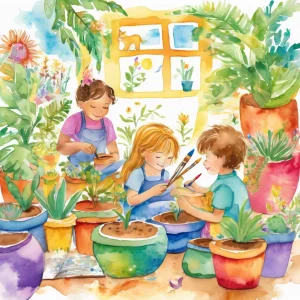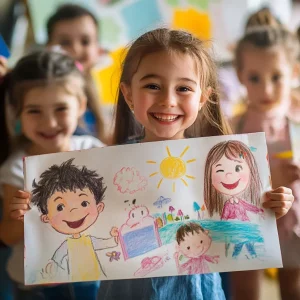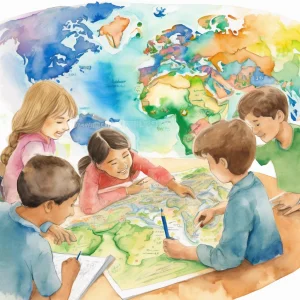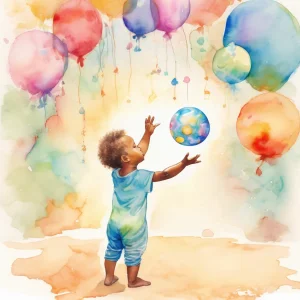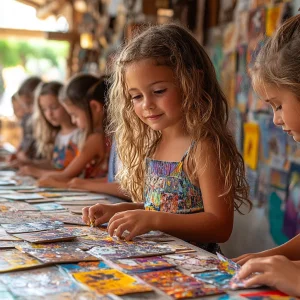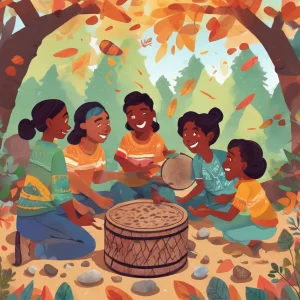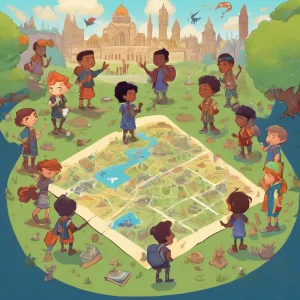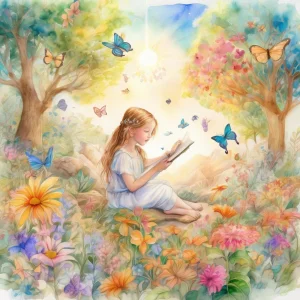Activity
Similar Activities
Animal-Inspired Plant Pots: Creative Nature Creations
Children’s Age: 3–6 years
Activity Duration: 20 minutes
Children will have a blast making animal-inspired plant pots, sparking creativity while learning about nature. Gather supplies like paint, pots, seeds, and soil to set up a creativ…
Activity Duration: 20 minutes
Magical Storytelling: Create Together with Friends
Children’s Age: 4–6 years
Activity Duration: 15 – 30 minutes
In the Create a Story Together activity, children will explore their creativity, language skills, and teamwork. Get small pieces of paper, colored pencils, and a container ready. K…
Activity Duration: 15 – 30 minutes
Enchanted Sensory Bottles: Magical Discovery Journey
Children’s Age: 6 months – 1.5 years
Activity Duration: 10 minutes
Explore the world of sensory play with homemade sensory bottles designed for children aged 6 to 18 months. These engaging bottles support social-emotional and language development …
Activity Duration: 10 minutes
Enchanted Melodies: Interactive Baby Rhyme Time
Children’s Age: 3 – 6 months
Activity Duration: 10 minutes
Enhance your infant's communication skills with the "Interactive Baby Rhyme Time" activity designed for babies aged 3 to 6 months. Utilizing nursery rhymes and songs, this activity…
Activity Duration: 10 minutes
Empathy through Dance: Expressing Emotions Creatively
Children’s Age: 6–10 years
Activity Duration: 25 minutes
"Empathy through Dance" is an engaging activity tailored for children aged 6 to 10 to foster empathy, moral growth, and language skills. Children will express emotions through move…
Activity Duration: 25 minutes
Whispers of the World: Around the World Virtual Adventure
Children’s Age: 7–9 years
Activity Duration: 20 – 30 minutes
Embark on the "Around the World Virtual Adventure," a captivating and educational journey for children to explore various cultures and innovations globally. Through this activity, …
Activity Duration: 20 – 30 minutes
Whispers of the Meadow: Ball Toss and Talk
Children’s Age: 1.5–2 years
Activity Duration: 5 minutes
"Ball Toss and Talk" is a fun activity designed for children aged 18 to 24 months to boost language skills through sports and physical play. All you need is a soft ball and a safe,…
Activity Duration: 5 minutes
Cultural Collage Celebration: Embracing Diversity Through Art
Children’s Age: 6–10 years
Activity Duration: 15 minutes
Explore and celebrate cultural diversity with the "Cultural Collage Celebration" activity designed for children. Enhance academic skills by creating a collaborative cultural collag…
Activity Duration: 15 minutes
Whispers of Nature Rhythms: Exploring Beats and Patterns
Children’s Age: 3–7 years
Activity Duration: 10 – 30 minutes
Let's explore "Nature Rhythms" together! We will listen to nature's beats and patterns using rocks, sticks, leaves, and pinecones. Find a safe outdoor spot, gather natural material…
Activity Duration: 10 – 30 minutes
The Global Treasure Hunt: Cultural Adventure Quest
Children’s Age: 9–11 years
Activity Duration: 10 – 30 minutes
Get ready for an exciting Global Treasure Hunt adventure! You'll explore different countries, solve clues, and work together in teams. All you need is a map, some clues, and a sens…
Activity Duration: 10 – 30 minutes
Nature-Inspired Drawing Activity
Children’s Age: 8–9 years
Activity Duration: 10 – 25 minutes
An outdoor activity where children draw natural elements to foster creativity and ecological awareness.
Activity Duration: 10 – 25 minutes
Ecosystem Adventure Board Game - Nature's Quest
Children’s Age: 7–9 years
Activity Duration: 10 – 25 minutes
An interactive board game where children explore and learn about ecosystems through challenges and tasks.
Activity Duration: 10 – 25 minutes



